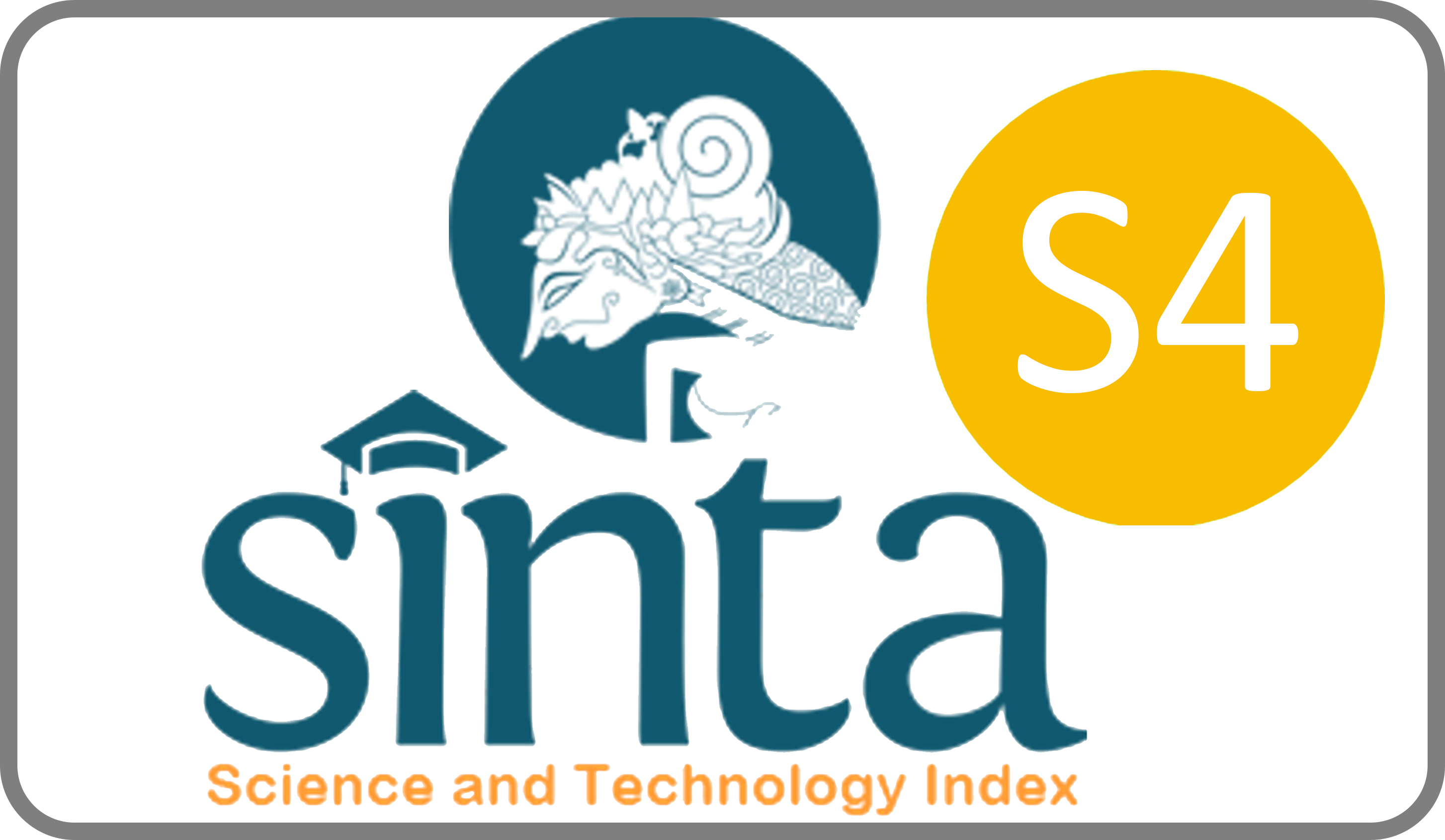EMPOWERING ADOLESCENTS AS STUNTING PREVENTION AGENTS: SWABANTU PROGRAM THROUGH ANTHROPOMETRIC SCREENING TRAINING AND PRACTICE
Downloads
Stunting is a chronic nutritional problem that remains a public health challenge, including in Sidoarjo Regency. Adolescents play a strategic role as agents of change in stunting prevention through information dissemination and direct involvement in nutritional screening. This community service activity aims to empower adolescents through an educational and participatory approach integrated into the Swabantu Program. The activities include increasing knowledge, training on anthropometric measurement skills, and field practice with the guidance of healthcare personnel and cadres. The participants comprised 40 adolescents, health cadres, and 10 community leaders. The activities were conducted in four sessions, which included: providing material on stunting and adolescent reproductive health; training in the measurement skills of height, weight, and upper arm circumference; conducting measurements on eight toddlers; and presenting and interpreting the results. The implementation methods included interactive lectures, question and answer, group discussions, skill stations, field practice, and evaluation using pre-tests and post-tests. Learning media included educational modules, early detection identification sheets, and measuring tools such as microtoise, digital scales, and upper arm circumference tapes. The pre-test and post-test instruments were validated by experts and analyzed descriptively, with paired t-tests used to measure intervention effectiveness. The results showed an average knowledge score increase from 58.2 to 78.6 (p < 0.05), with 100% of participants performing anthropometric measurements correctly. Qualitative data were analyzed thematically through observation and discussions. Assessments of the eight toddlers showed that all had normal height, 62.5% were underweight, and 87.5% had normal upper arm circumference. Challenges during implementation included limited field practice time, variation in participant understanding, and coordination with toddler families. Nevertheless, this activity successfully enhanced adolescents' knowledge, skills, and potential as community agents in stunting prevention.
Arsyad, M., Nurjannah, N., & Wibowo, A. (2021). Strategi pembelajaran partisipatif dalam meningkatkan pengetahuan dan keterampilan remaja. Jurnal Pendidikan dan Pemberdayaan Masyarakat, 8(2), 112–122. https://doi.org/10.23917/jppm.v8i2.15932.
Aulia. (2017). Pengendalian hipertensi. Direktorat Pencegahan dan Pengendalian Penyakit Tidak Menular, Kementerian Kesehatan RI. http://www.p2ptm.kemkes.go.id/kegiatan-p2ptm/subdit-penyakit-jantung-dan-pembuluh-darah/pengendalian-hipertensi-faq.
Azis, M. (2012). Dasar-dasar pengembangan masyarakat. Yogyakarta: Samudra Biru.
Bakrie, N. (2023). Sidoarjo kok naik? Jatimnow.com. https://jatimnow.com/baca-55782-angka-stunting-nasional-dan-provinsi-jatim-turun-sidoarjo-kok-naik.
Dinas Pengendalian Penduduk dan Keluarga Berencana, Pemberdayaan Perempuan dan Perlindungan Anak Kota Pontianak. (2023). Ciri-ciri anak mengalami stunting. https://dppkbpppa.pontianak.go.id/informasi/berita/ciri-ciri-anak-mengalami-stunting.
Graha, A. N. (2009). Pengembangan masyarakat pembangunan melalui pendampingan sosial dalam konsep pemberdayaan di bidang ekonomi. Modernisasi, 5(2), 85–92. http://ejournal.unikama.ac.id/index.php/JEKO/article/download/243/636.
Kementerian Kesehatan Republik Indonesia. (2018). Hasil riset kesehatan dasar (Riskesdas) 2018. Jakarta: Badan Penelitian dan Pengembangan Kesehatan.
Keputusan Bupati Sidoarjo Nomor 188/299/438.1.1.3/2022. Tentang desa prioritas pencegahan dan penanganan stunting serta intervensi spesifik dan sensitif di Kabupaten Sidoarjo tahun 2023.
Lestari, S., & Widodo, A. (2022). Efektivitas metode pelatihan berbasis pengalaman dalam meningkatkan keterampilan remaja. Jurnal Pendidikan Kesehatan, 5(1), 21–28. https://doi.org/10.31227/osf.io/abc123.
Litbangkes. (2021). Studi Status Gizi Indonesia (SSGI) 2021. Badan Penelitian dan Pengembangan Kesehatan. https://ssgi.kemkes.go.id.
Nugroho, A., Sari, P. K., & Setiawan, R. (2023). Pelatihan berbasis komunitas untuk peningkatan kesiapan remaja dalam isu kesehatan. Jurnal Kesehatan Komunitas, 9(1), 14–23. https://doi.org/10.20884/1.jkk.2023.9.1.1234.
Permanasari, I., Sutantri, & Rahmah. (2014). Pengaruh self help group (SHG) terhadap pengetahuan dan sikap merokok pada siswa di salah satu SMA di Yogyakarta (Skripsi). Universitas Muhammadiyah Yogyakarta. http://thesis.umy.ac.id/datapublik/t33863.pdf.
Rafiq, M. (2015). Training evaluation in an organization using Kirkpatrick model: A case study of PIA. Journal of Entrepreneurship & Organization Management, 4(3). https://doi.org/10.4172/2169-026X.1000150.
Rahmawati, D. (2020). Pengaruh pendekatan pelatihan kontekstual terhadap perubahan perilaku remaja. Jurnal Pendidikan dan Pengabdian Masyarakat, 7(1), 32–40. https://doi.org/10.31227/osf.io/xyz456.
Rifan, R., & Ansar, W. (2021). Faktor penyebab perilaku makan pada anak. Seminar Nasional Hasil Penelitian 2021. https://ojs.unm.ac.id/semnaslemlit/article/download/25485/12775.
Suwanti, I., & Aprilin, H. (2017). Studi korelasi pengetahuan keluarga pasien tentang penularan hepatitis dengan perilaku cuci tangan. Jurnal Keperawatan Dian Husada, 10(2), 115–120. http://e-journal.lppmdianhusada.ac.id/index.php/jk/article/view/65/59.
Sulistyaningrum, W. S. (2021). Memperkuat peran remaja dalam penyampaian pesan kunci strategi komunikasi perubahan perilaku. Kementerian PPN/Bappenas. https://sunam2021.cegahstunting.id/img/materi/26_okt_2021/261021%20Memperkuat%20Peran%20Remaja%20dalam%20Penyampaian%20Pesan%20Kunci.pdf
UNICEF Indonesia. (2023). Pengukuran LiLA: Salah satu cara penting untuk deteksi dini wasting. https://www.unicef.org/indonesia/id/gizi/artikel/pengukuran-lila-deteksi-dini-wasting.
Victora, C. G., Adair, L., Fall, C., Hallal, P. C., Martorell, R., Richter, L., & Sachdev, H. S. (2010). Maternal and child undernutrition: consequences for adult health and human capital. The Lancet, 371(9609), 340–357. https://doi.org/10.1016/S0140-6736(07)61692-4.
World Health Organization. (2006). WHO child growth standards: Length/height-for-age, weight-for-age, weight-for-length, weight-for-height and body mass index-for-age: Methods and development. Geneva: WHO Press.https://www.who.int/publications/i/item/924154693.
Zillah, F., Husniati, R., & Aziz, A. (2022). Pengaruh pelatihan, pengawasan, dan disiplin kerja terhadap kinerja karyawan. Studi Ilmu Manajemen dan Organisasi, 3(1), 213–232. https://doi.org/10.35912/simo.v3i1.677.
Copyright (c) 2025 Hilmi Yumni, Minarti Minarti, Nikmatul Fadilah, Baiq Dewi Harnani

This work is licensed under a Creative Commons Attribution-ShareAlike 4.0 International License.
JLM by Unair is licensed under a Creative Commons Attribution-ShareAlike 4.0 International License.
1. The journal allows the author to hold the copyright of the article without restrictions.
2. The journal allows the author(s) to retain publishing rights without restrictions
3. The legal formal aspect of journal publication accessibility refers to Creative Commons Attribution Share-Alike (CC BY-SA).
4. The Creative Commons Attribution Share-Alike (CC BY-SA) license allows re-distribution and re-use of a licensed work on the conditions that the creator is appropriately credited and that any derivative work is made available under "the same, similar or a compatible license”. Other than the conditions mentioned above, the editorial board is not responsible for copyright violation.


















